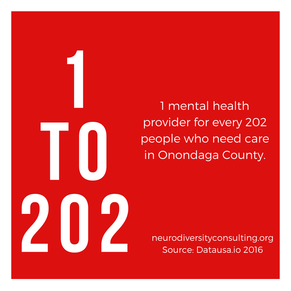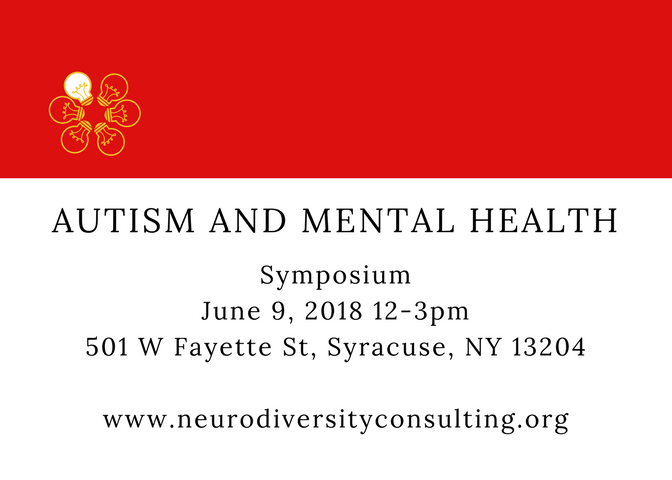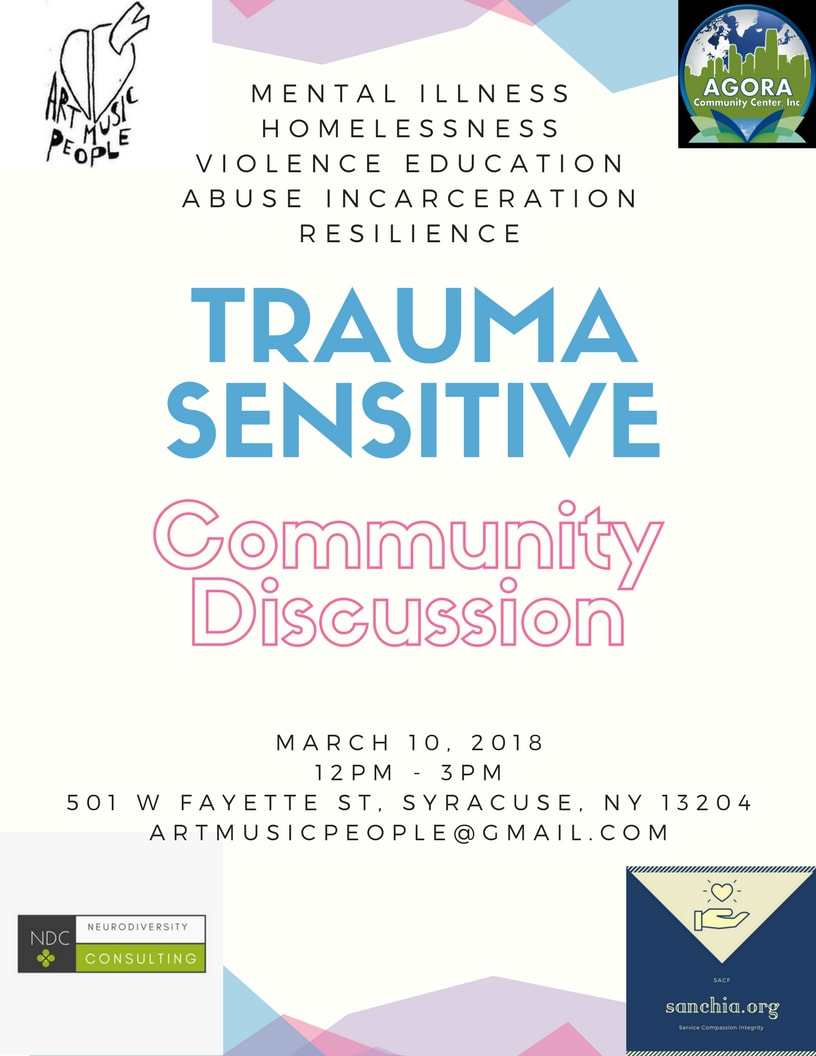|
by Liza Citron  Educators can make the best experiences for students in the classroom. Educators can make the best experiences for students in the classroom. As teachers are going back to school, many might have an autistic or otherwise neurodivergent child in their class -- perhaps for the first time. Educators might reasonably wonder where to begin in tailoring the classroom experience to that child -- connecting to the child as an entirely new experience for the teacher. How different is the autistic experience to the neurotypical one? How does autism affect a child in their formative years? What changes should be made for the child to help them connect to the curriculum and the teacher, and to help them succeed? These are all questions teachers might be asking themselves as the “mad rush” to prepare for the school year comes into full swing. All these questions may seem daunting to the teacher, especially ones new to their classroom. Everything comes down to paying attention to and carefully observing the child -- and, of course, listening to what they may tell you. Careful observation can tell you what the child’s most significant struggles are, and conversely, what their greatest successes or strengths are or maybe in the future. As an autistic adult, I don’t personally know the neurotypical experience. I can, however, compare my autistic experience with descriptions from neurotypical friends and family members. My perspective helps provide insight into neurotypical and neurodivergent experiences that impact the classroom. One of the main differences I have noted is the capacity for sensory input and susceptibility towards over-stimulation. Things neurotypicals might not even notice can be “deafening,” if you will, to an autistic individual -- and can cause either shutdown or meltdown, depending on the situation. As such, the best learning/work environment for many autistic people, and neurotypical people is one with the least sensory stimuli possible. In such a situation, it is easier to maintain concentration, and much easier to lower anxiety levels, both of which provide a more productive mental state. Another difference to consider, especially with young children, is the theory of mind -- seeing situations from another’s perspective. Theory of mind is an aspect of human behavior and neurology that is important in relationship building and learning. Contrary to what some may think autistic people are not insensitive to what others need or want. However, it can often be difficult for us to see those needs and wants in the context of a situation. Providing an environment for role-play, or anything that requires “characters” can often help develop a person’s understanding of the theory of mind. Every individual, autistic or not, will have their levels and specifics of needs, struggles, and strengths. The above are just two of the multitude of ways in which the autistic experience can differ from the neurotypical one. Taking the time to learn, understand, and account for these individual aspects allows educators to set themselves and their students up for success in the new school year. Read more Neurodiversity Rewires Conventional Thinking About Brains
0 Comments
Save the date for this fall's autism resource fair with the Syracuse City School District. Interested vendors can sign up to participate here.
Parent University Fall Conference and Autism Resource Fair Saturday, October 5, 2019 PSLA Fowler 227 Magnolia St, Syracuse, NY 13204 9:00 AM - 1:30 PM Join us for the Autism and Mental Health Symposium June 9, 2018 to explore barriers to access to mental healthcare for people on the autism spectrum. Register here.
 It’s well established in research literature that people with autism and related disorders have an increased vulnerability to mental health challenges. Despite this fact the mental health resources available to autistic people and their families in their communities are limited. In Onondaga County the clinician to patient ration in mental health is 1 to 202. In that number few are able or willing to meet the mental healthcare needs of autistic people. Families and individuals are left with little or no options for addressing their mental health care needs. We can do better. Register now for our Autism and Mental Health Symposium to explore the barriers to access. Be part of the solution. We like to divide people into neat little categories. These categories serve as shorthand for getting to know others. In this case the people being divided up are autistic. People rely a high functioning/low functioning distinction to describe a person’s perceived place on the autism spectrum. High functioning is shorthand for “can pass as not autistic at first glance.” Low functioning is shorthand for “not passing as anything but autistic anytime soon.” These two categories also serve as stand ins for verbal and nonverbal respectively when is comes to communicating with others.
The high/low divide presumes that the autism spectrum is linear. It is not. The autism spectrum is multidimensional. It is as complex as people are. Thus far the best science tells us that autism touches on every aspect of human biology that we know makes us who we are. Autistic can’t be reduced to a linear division of function, but people try anyway. The linear high/low gradient comes in handy for pitting the different needs of autistic people against each other. A focal point of the divide is communication. An autistic person able to utilize verbal communication is deemed to not have it that bad, not be truly autistic or to be “pretending to be just like those who have incredible difficulty.” Those who do not utilize verbal communication are portrayed in the worst light while at the same being venerated as truly autistic. Such an attitude of placing nonverbal autistic people on a pedestal while dismissing the needs of other autistic people serves only to disenfranchise all autistic people. With the growth of internet access, smart phones, and the rise of social media autistic people, including many nonverbal autistics, have proven themselves blisteringly articulate with the spoken and written word. They hold nothing back in their criticism of what they’ve endured in the name of addressing their autism At the same time, they offer hope and encouragement to parents of the next generation of autistic people. Yet the voices of autistic people continue to be set aside. Either because they are perceived as not autistic enough or too autistic to have an opinion of their own. As someone advocating for the respect and dignity of all people with autism this is a disheartening. What are people advocating for if the voices of autistic people aren’t engaged in their communities? Will my children be heard when they speak up for themselves? Or will they be dismissed because the gatekeepers deem them to be not the right kind of autistic? Comparing autistic people to each other leading to the invalidating of another’s experience is unacceptable. High or low functioning is a measure of how much work a neurotypical person thinks they must do to relate or communicate with an autistic person. Every autistic voice needs to be included in the conversation about autistic people regardless of outside perceptions of a person’s functioning. We've partnered with several area organizations for an event discussing the effects of adverse childhood experiences (ACEs) in the Syracuse community. There will also be an opportunity to view the film Paper Tigers. Please join us on March 10, 2018 12pm-3:00pm at 501 W Fayette St, Syracuse, NY 13204
New York State's Autism Spectrum Advisory Board was established by law in 2016. I'm encouraging families and individuals to share their concerns with the Board. They need to hear about what works and doesn't work in New York state from the people who live with experience autism every day. You can download the October 2017 report from the Board at the link above or from this post. My own comments to the board are here.
The following are written comments submitted to the New York state Autism Spectrum Disorder Advisory Board on February 13, 2018 as part of a public forum.
The public has been asked to comment on the following questions.
Representation of autistic voices and experiences are imperative for the advisory board to make informed decisions about the lives of autistic people and their families. The distinction that is often drawn between “low functioning” and “high functioning” individuals on the spectrum is a distinction without meaning when it comes to insuring appropriate systems of support are in place for families and individuals. The self-direct program has the potential to be a game changer in the lives of people with disabilities. For some it has been. In my experience it saddles families and individuals with an unpaid part time job filling out paperwork and resolving mistakes made by various agencies with little to show for all that effort. Time delays in processing paperwork by agencies, inconsistent policies, and little to no oversight by OPWDD make the program almost unusable. Families and individuals need consistent guidelines for agencies involved in self-direct as well as a clear grievance process with state regulators when a problem with an agency needs to be addressed. State Department of Education regulations often function as an impediment to the education of students with IEPs and 504 plans. Families and educators need clear guidelines, free of ambiguities, that comply with IDEA. We need regulations and guidelines with flexibility to facilitate a student’s academic success rather than function as gatekeepers and roadblocks frustrating student progress. Families need a clear path to accountability for school districts that routinely fail to comply with IEPs and 504 plans. In CNY alone, several districts are notorious for forcing students and/or refusing to comply with IEPs and 504 plans. Ask the families and self-advocates in the region for the details. On the school funding front urban and small rural school districts need adequate funding to meet the educational needs of all students. Our students’ success is continuously hamstrung by needy schools held hostage by the state budgeting process that consistently fails to consider what it actually costs to educate a student. This isn’t a call to bemoan how much it costs to educate our students. This is a call to do it right and stop scratching our heads about why our students keep failing. Accountability, transparency, and accessibility are integral parts of service delivery for families and individuals living with autism. Meaningful oversight of agencies offering services is lacking leaving people at the mercy of a bureaucratic behemoth. We need consistent policies that don’t change midstride with zero input from the people who live with the impact of those changes. The must be recognition that there are real people with hopes and dreams impacted by policy changes. We need legislators and heads of agencies like OPWDD and OMH to listen to our needs rather than tell us what our needs are and how they are going to meet them. Families and individuals need ground floor access to the decision-making process. Nothing about us without us. Several parents and professionals spoke today about the need for better mental health services for families and individuals on the autism spectrum. As part of a CNY advocacy group about this issue I’ve prepared information to share with legislators about the state of mental health services and the needs in CNY. That information is included with these comments. Decades of advocacy have produced growing numbers of autistic people who are speaking up for themselves. Whether they speak with a voice from their mouths, with the assistance of technology, or with behavior. Listen to them. Sincerely, Samantha JC Pierce NeuroDiversity Consulting Sanchia A Callender Foundation  New York state education regulations as written and implemented throw stumbling blocks in the paths of students with IEP/504 Plans. In New York state a student with an IEP/504 Plan that includes an extended time testing accommodation can end up enduring 12 hours of testing to complete Regents exams if they have two exams scheduled on the same day. New York doesn't reschedule these exams to accommodate students with IEP/504 Plans. One option is for the student to take one of the exams months later during one of the other allowed testing period in January, June, and August. The other option is to not take one of the exams at all. The New York State Education Department will, on a case by case basis, allow schools to petition the state for permission to administer a test over multiple consecutive days to a student with this accommodation in their IEP/504 Plan. The petition has to be made months in advance of the scheduled exam and the state still has the option to turn down the request. Parents have to know this option is available to their students and school staff also have to be aware. The regulations in question are here. Are accessible to families, students, or school staff? No. I'm not sure how you would find them if you didn't already know where to look and what to look for. Are they clear as to their purpose and how they can be implemented? No. If this seems like an undue burden to place on students with IEP/504 Plans you are not mistaken. It is unclear how many students in New York state have their educational careers sabotaged by ambiguous and inflexible state regulations. What is clear is that these regulations need to give way to the precedents established by IDEA (download a copy if you don't have one) guaranteeing students with disabilities free access to an education. Right now students in New York state with IEP/504 Plan do not have that free access. That must change. |
Categories
All
Archives
December 2021
|
||||||
Photo from Hayzphotos


 RSS Feed
RSS Feed
